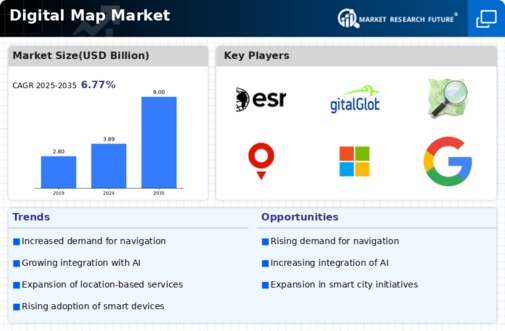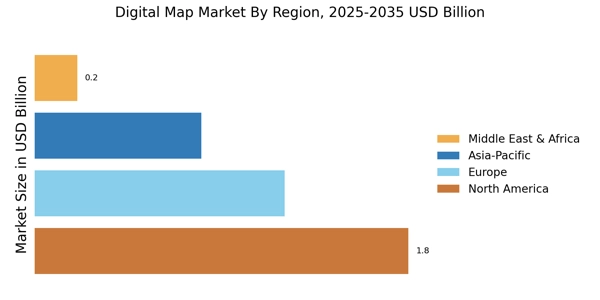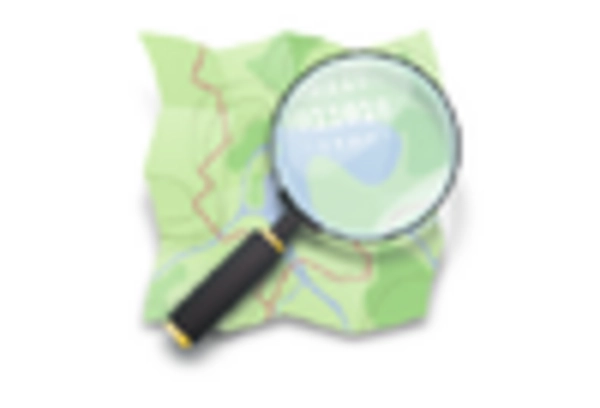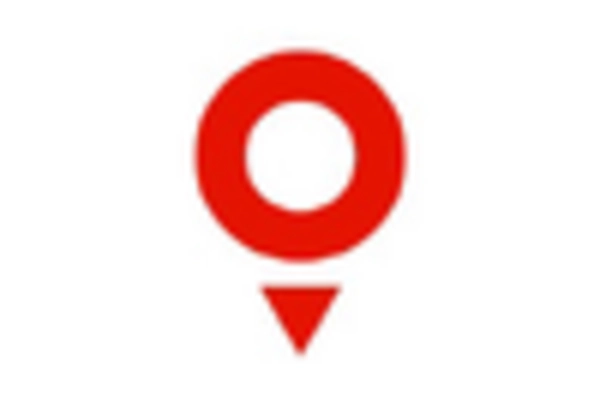Emergence of Autonomous Vehicles
The emergence of autonomous vehicles is poised to revolutionize the Digital Map Market. As self-driving technology advances, the need for highly accurate and detailed maps becomes paramount. In 2025, it is projected that the market for digital maps tailored for autonomous navigation will experience a growth rate of approximately 25%. This demand is driven by the requirement for real-time data and high-definition mapping to ensure safe and efficient vehicle operation. Consequently, companies within the Digital Map Market are likely to invest in developing specialized mapping solutions that cater to the unique needs of autonomous vehicles.
Expansion of E-commerce and Delivery Services
The rapid expansion of e-commerce and delivery services has significantly impacted the Digital Map Market. As online shopping continues to grow, logistics and delivery companies require precise mapping solutions to optimize their operations. In 2025, the demand for digital maps in the logistics sector is projected to increase by around 20%, driven by the need for efficient route planning and real-time tracking. This shift necessitates the development of more sophisticated mapping technologies that can accommodate the complexities of urban environments. Thus, the Digital Map Market is likely to see increased collaboration between mapping providers and logistics firms to enhance service delivery.
Increased Adoption of Navigation Applications
The proliferation of navigation applications has been a driving force in the Digital Map Market. As consumers increasingly rely on mobile devices for navigation, the demand for accurate and detailed digital maps has surged. In 2025, it is estimated that the navigation application segment will account for a substantial portion of the market, with projections indicating a growth rate of approximately 15% annually. This trend is fueled by the need for real-time traffic updates, route optimization, and enhanced user experiences. Consequently, companies in the Digital Map Market are investing heavily in improving map accuracy and integrating advanced features to meet consumer expectations.
Government Investments in Infrastructure Development
Government investments in infrastructure development are playing a crucial role in shaping the Digital Map Market. As nations prioritize the enhancement of transportation networks, the demand for accurate and up-to-date digital maps is expected to rise. In 2025, it is anticipated that public sector projects will contribute significantly to the market, with funding directed towards smart transportation systems and urban planning initiatives. This trend suggests that mapping solutions will need to evolve to support these projects, incorporating features such as 3D mapping and geospatial analytics. Consequently, the Digital Map Market is likely to benefit from increased collaboration with governmental agencies.
Growing Demand for Geographic Information Systems (GIS)
The growing demand for Geographic Information Systems (GIS) is significantly influencing the Digital Map Market. Organizations across various sectors, including urban planning, environmental management, and disaster response, are increasingly utilizing GIS for data analysis and decision-making. In 2025, the GIS segment is expected to witness a growth rate of around 18%, driven by the need for spatial data visualization and analysis. This trend indicates that the Digital Map Market must adapt to provide more integrated GIS solutions, enhancing the functionality and usability of digital maps for diverse applications. As a result, the industry is likely to see innovations that cater to the evolving needs of GIS users.


















Leave a Comment